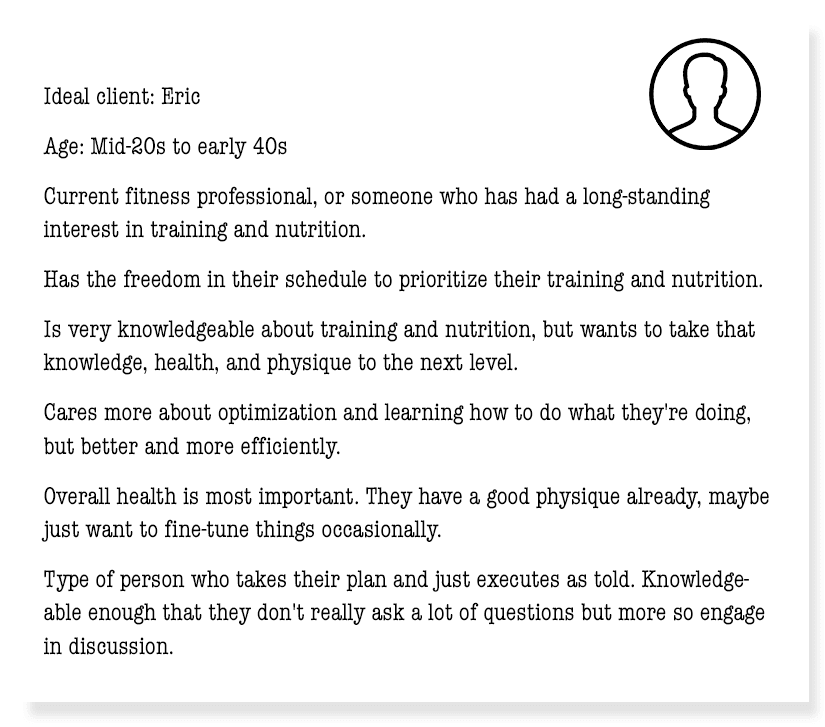Today more than ever people are looking for ways to live healthy and stay active. They’re turning to personal fitness coaches to get the results they want. But going to the gym isn’t as easy as it used to be, so they’re looking online.
According to the U.S. Bureau of Labor Statistics, jobs as fitness trainers and instructors are on the rise. The work environment may be changing, though. Many potential clients are looking for ways to both have a fitness coach and work out at home. You can fill that need in a couple of ways. One of the most exciting, though, is by taking your personal training business out of the stuffy, crowded gym and putting it online to reach more clients than ever before.
Going online with your fitness coaching business helps you maximize your time and lower operating costs. In addition, as a business model, online personal training is scalable, meaning you can expand and reduce it as needed.
An online training service helps your clients achieve their fitness and health objectives while allowing you to reclaim that all-important personal and financial independence.
So if you’re wondering how to become a virtual personal trainer, consider the lessons I learned during my first year of working online.
How I got started as an online fitness trainer
A few years ago, I received an email from a woman I knew from college. We weren’t friends, but we had a few classes together and followed each other on Facebook.
She had seen my business page, read some of my blog posts, and reached out to me to see if I could help her lose weight. And just like that, I was able to get my first online fitness coaching client. The rest, as the tired cliché goes, is history.
10 tips for the online personal trainer
Since then, I’ve learned how to grow my online coaching business. My knowledge of both coaching and running an online business continues to grow. So if you’re thinking about moving your personal training services online, allow me first to share some key insights about making the jump.
1. Gain experience in a gym first
If you want to be a good online fitness coach, it helps a lot to have experience coaching in real life too. (But if that’s not possible, read this: “How to Train Online Without Any In-Person Experience.”) Frankly, I don’t like coaching in person as much as I do coaching fitness clients online, but the experience of working with real people in a professional environment taught me four things:
- Coaching in person teaches you how to assess client movement patterns visually. This is a major advantage because everyone is going to move differently. Once I saw and coached several different people through a movement, it was a lot easier to recommend a squat stance and make adjustments.
- You get comfortable dealing with people. It’s one thing to chat with fitness clients online, but another when you’re talking to someone with whom you can connect face to face.
- You learn to sell yourself. Some gyms really require you to work hard to sell training sessions. While that may not be pleasant, you better understand what works and what doesn’t (building rapport versus being overly pushy). Being able to sell yourself and your service is critical to your fitness coaching success.
- Coaching in person made me realize what my time is worth.
If you start in a big commercial gym, take the time to learn as much as you can while you’re there.
2. Remember that online coaching is still a personal training business … and you’re in charge

If you’re working in a gym, there’s a team of people running all the operations, such as marketing, sales, and accounting. However, when running an online personal training business, you’re both the employee and the boss.
You need to learn how to manage expenses (Mint is a great, low-cost way to manage personal and business-related finances, by the way), do marketing, run a personal training website, manage your money, set up your programs, and all the other fun stuff that goes with having your own business.
Of course, it’s all trial by fire; you’re not expected to be awesome at it right away. You’ll probably make many mistakes, but learning what these mistakes are (or reading about them) will save you money and help you become a better decision maker.
When I was first starting out as a virtual personal trainer, I made a list of the others in the business I looked up to and reached out to them. Many were more than happy to share tips with me on how to get started.
Don’t be afraid to reach out and ask how online fitness coaching works. Be specific with your questions and offer a bit of value in return. For example, ask, “What was the first thing you did when you decided to be an online coach?” versus “How do I get started as an online coach?” Being specific will get you a more meaningful reply.
At the same time, don’t be offended if they don’t answer. They’re busy too.
3. Learn how to sell yourself online
Writing about your services is a big part of selling your personal training services. You need to convey your value and the benefits of your program in a way that connects with the reader.
Bad writing will clearly come off as bad, falling flat, and “too sales-y,” which many personal fitness trainers work hard to avoid.
Good writing, on the other hand, does more than just sell online fitness services. It takes the reader through a journey.
Your goal is to guide the customer through these five mental steps:
- Awareness of a need or desire
- Picking the thing that will satisfy that desire
- Picking the source for that thing
- Accepting the price/value argument
- Finding reasons to act immediately
Back up your information with testimonials from previous clients, and then include a limited-time offer that gives the prospect a reason to take action. When they’re done reading, the customer should feel like your online fitness coaching may be the answer they need to get healthy.
4. Create a fitness client profile
A client profile allows you to get to know your target audience and define your specialty. Add as much detail as you can, as if you were describing a friend. You can include information like interests, personality traits, income, current career track, and so on. By finding who your ideal client is, you can focus on targeting this group of people.
Below is an example of one of my ideal clients, a 20-to-40something fitness professional who wants to take their physique to the next level. See how detailed it is?

Maybe your specialty is post-pregnancy women you help to shed the baby weight. Or maybe it’s 40-year-old men who want to get stronger and build muscle.
Whatever it is, having a clear picture of your ideal client will help you create a targeted business plan for your online personal training and become the “expert” or go-to professional for this group of people.
If you don’t know your client, start paying attention to the type of people who come to you or who you enjoy working with the most. Chances are, these people are your clientele.
5. The cream rises to the top
“The cream rises to the top” is a saying that implies a good or notable person cannot remain unnoticed forever—that is, if you put in the right amount of hustle.
You may think it’s easy: Just set up a blog and a coaching page, and watch clients flock to you. Nope.
The most successful online fitness coaches are the ones who produce results and consistently put out great content.
6. Find your writing voice
You need to learn to write—it’s worth repeating. This is about transmitting the ideas in your head to a written format. There’s no better way to show people your knowledge than putting out free, high-quality content, even if it’s just actionable and shareable Facebook posts. However, a blog with free, informative content is your best marketing asset.
Invest the time into finding your writing voice (which is basically the way you talk, but more refined) and hone this skill. The only way to do that is to keep writing and actively learning from people who do it well, even if you think no one is reading.
Over time, you can accumulate a large body of work and convince larger media outlets to pay for your writing. Very rarely will a site accept posts from people with no writing history, so build up your content and use it as your résumé.
7. Find your hourly worth
As an online personal fitness coach, you don’t have anyone setting prices for you, so you need to determine what your services are worth. What you charge is as much about your confidence and mindset as it is about ability or service.
A good place to start is by reading "How Much You Should Charge for Personal Training."
If you can make people believe in your service—ideally through your sales process and how you demonstrate value—you can get them to pay whatever you want to charge. The three best ways to demonstrate value are:
- Through the content you provide, show off your knowledge with informative blog posts, newsletters, YouTube videos, and any other medium that lets you connect with your customers.
- Creating effective sales copy makes your product pages stand out and show them what your service can provide.
- Getting results for your fitness clients—use testimonials to show potential clients you can deliver results.
I make more per hour with online fitness coaching than I did at my old gym. I can work with more people at one time, increasing my hourly worth. When working at a gym, they set the prices for you.
8. Don’t discount yourself

Don’t discount your services just to get clients. If you do, you’re telling potential clients that you’re not worth what you’re charging. Set your prices and stick to them.
Consider setting up three pricing packages: a low, medium, and high price when creating your personal training website, and present them side by side. The low one sets the baseline, while the high one makes the medium seem reasonable. When the client sees this, they almost always choose the medium middle option.
9. Learn how to connect
People pay for coaches, not coaching. Coaching is as much about creating a connection with people as it is about writing programs.
Some online personal training coaches only answer emails at certain times or limit how often their clients can interact with them. And while I can understand that, it’s not a practice I follow. If a client emails me, I’ll reply right away when possible. That’s just another layer of excellent customer service.
You need to empathize with your clients and show them that you understand their struggles, why they binge eat, and why they skipped their workout today. Ask questions, find common interests, and create a connection with them.
With regular communication, not only will you build better relationships with your online fitness clients, but you’ll help them get results.
This is infinitely more important online because you can’t personally hold your clients accountable, and you may not even see them (online) every week. By understanding what they go through, you can better help them address these issues head-on.
10. Remember that time is your number-one asset
Time is the one thing you can’t get back. The biggest reason for my switch to online fitness coaching is to get a lot more value for my time.
There are many trainers out there who scoff at the idea of coaching people online, but it may be because they haven’t recognized the value of maximizing their time. Spending 40 to 50 hours a week working in a gym for someone else does not help you toward that end.










